Media coverage
Share

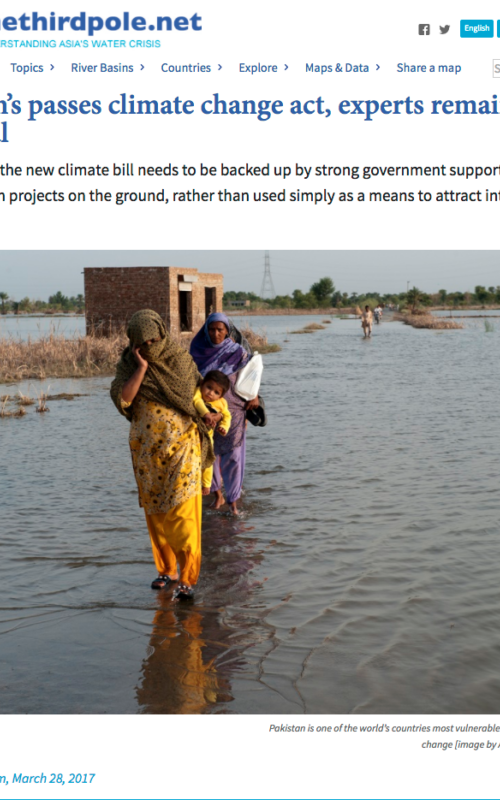
The Third Pole
Pakistan has joined the ranks of a handful of countries that have passed climate legislation. Climate Analytics' Dr Fahad Saeed says the bill must be backed by the right information and stresses the need to strengthen Pakistan's scientific research input.
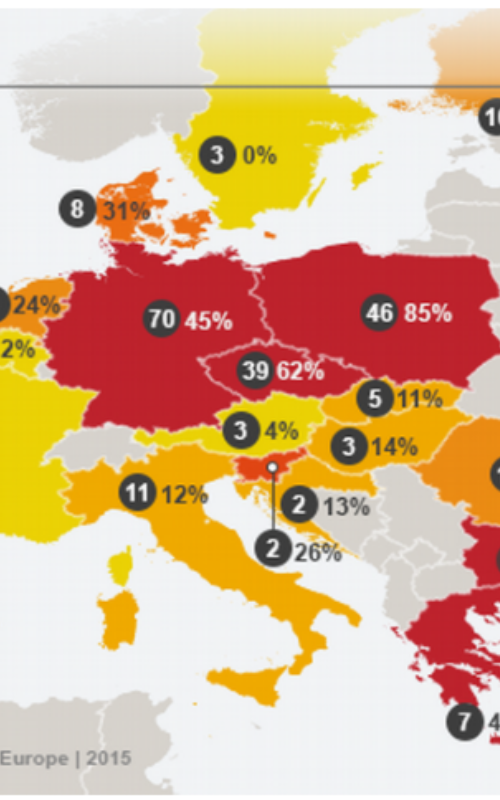
Deutsche Welle
All coal-fired power plants in the EU need to be shut down by 2030 in order to achieve the goals set at the Paris Agreement. For the first time, scientists have created an exit plan for all power plants in the EU.
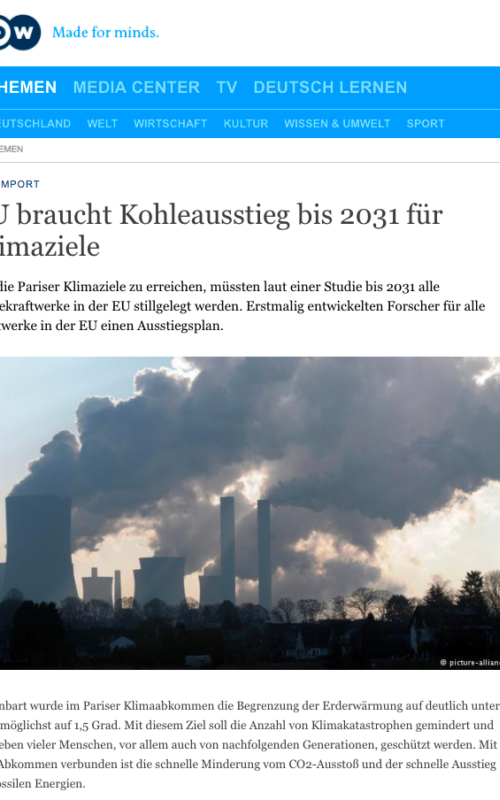
Deutsche Welle
Um die Pariser Klimaziele zu erreichen, müssten laut einer Studie bis 2031 alle Kohlekraftwerke in der EU stillgelegt werden. Erstmalig entwickelten Forscher für alle Kraftwerke in der EU einen Ausstiegsplan.
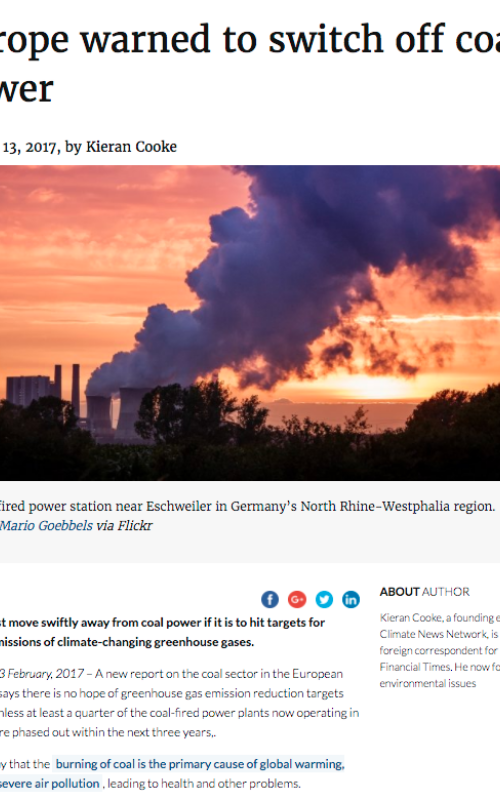
Climate News Network
A new report on the coal sector in the European Union (EU) says there is no hope of greenhouse gas emission reduction targets being met unless at least a quarter of the coal-fired power plants now operating in the region are phased out within the next three years.
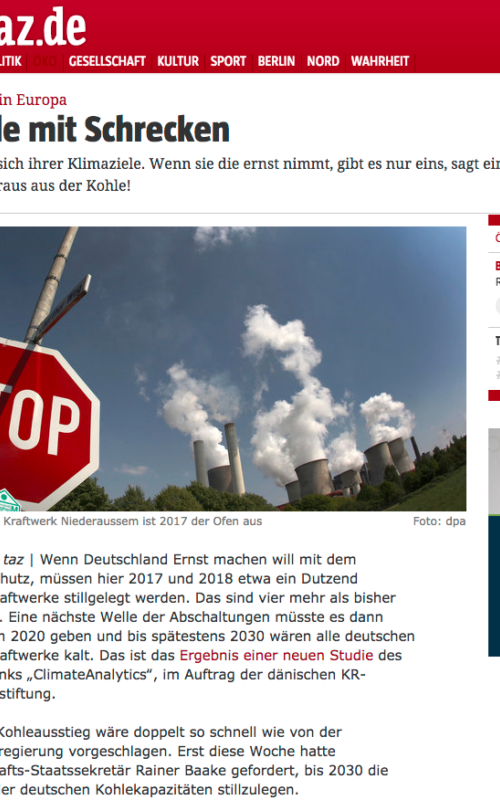
Die Tageszeitung
BERLIN taz | Wenn Deutschland Ernst machen will mit dem Klimaschutz, müssen hier 2017 und 2018 etwa ein Dutzend Kohlekraftwerke stillgelegt werden. Das sind vier mehr als bisher geplant. Eine nächste Welle der Abschaltungen müsste es dann rund um 2020 geben und bis spätestens 2030 wären alle deutschen Kohlekraftwerke kalt. Das ist das Ergebnis einer neuen Studie des Thinktanks Climate Analytics, im Auftrag der dänischen KR-Umweltstiftung.
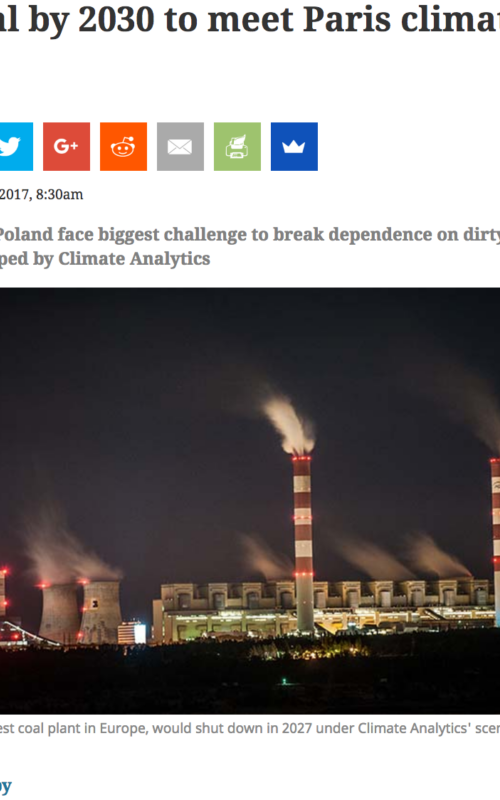
Climate Home
Belchatow, Poland, to close in 2027. Neurath, Germany, to burn its last lump of lignite in 2029 or 2030. That is what meeting the climate goals world leaders agreed in Paris means for the EU’s biggest coal power stations, according to a report by Climate Analytics.
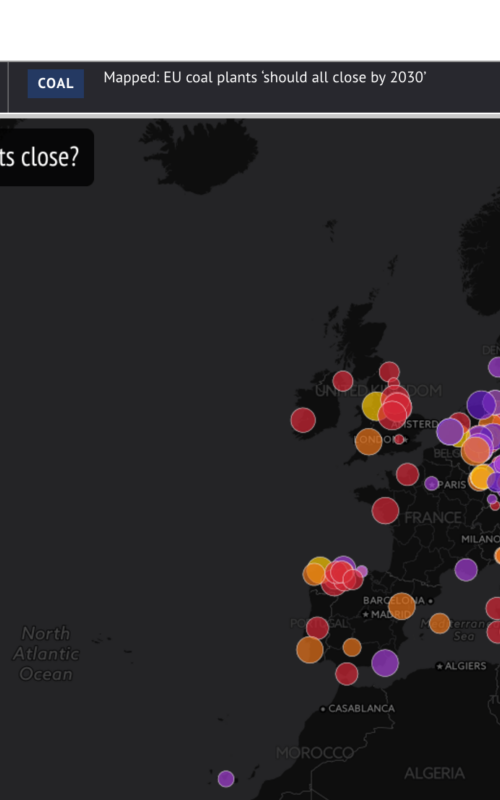
Carbon Brief
EU countries should close all of their coal plants by around 2030 if they wants to stick to the Paris Agreement on climate change. This is the conclusion of a new report by research non-profit Climate Analytics. The cheapest way to meet Paris targets is to replace EU coal power with renewables and energy efficiency, it says.
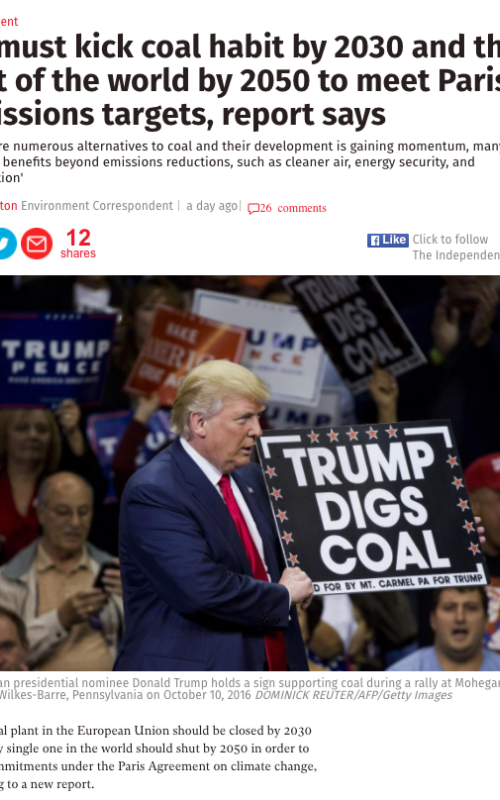
The Independent
Every coal plant in the European Union should be closed by 2030 and every single one in the world should shut by 2050 in order to meet commitments under the Paris Agreement on climate change, according to a new report. Researchers at Climate Analytics founds replacing coal with renewable energy was the cheapest way to achieve the targets to reduce greenhouse gas emissions.
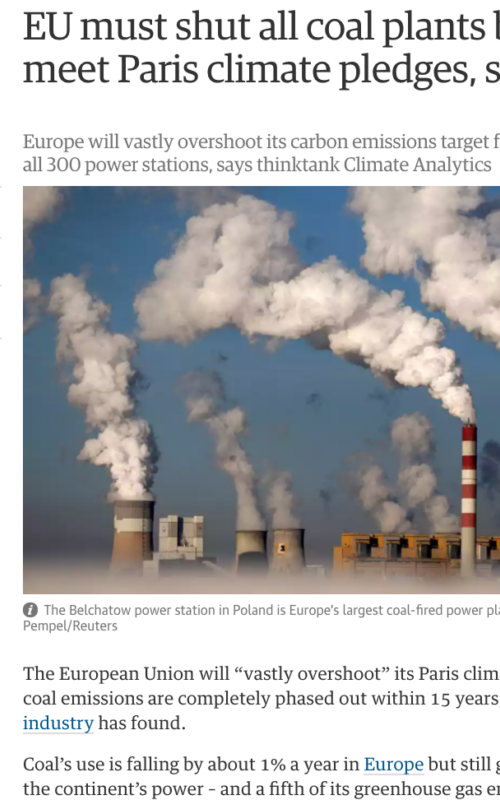
The Guardian
The European Union will “vastly overshoot” its Paris climate pledges unless its coal emissions are completely phased out within 15 years, a stress test of the industry has found. Coal’s use is falling by about 1% a year in Europe but still generates a quarter of the continent’s power – and a fifth of its greenhouse gas emissions.
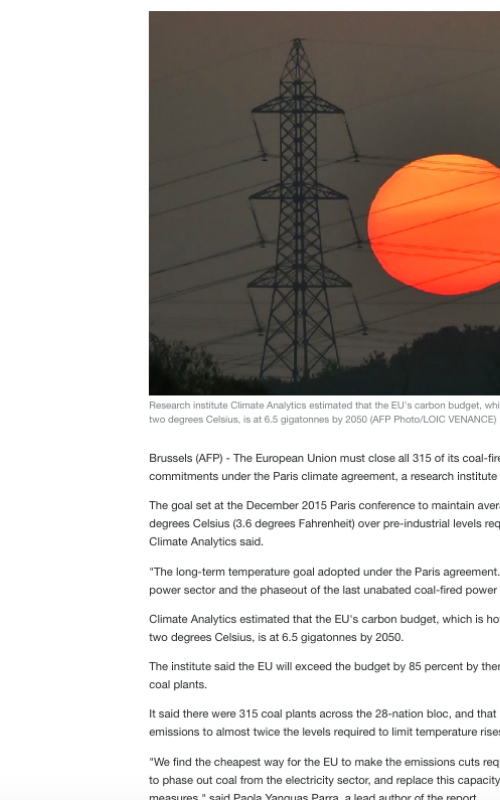
AFP
Brussels (AFP) - The European Union must close all 315 of its coal-fired power plants by 2030 in order to meet its commitments under the Paris climate agreement, a research institute said Thursday. The goal set at the December 2015 Paris conference to maintain average temperature increases to less than two degrees Celsius (3.6 degrees Fahrenheit) over pre-industrial levels requires the gradual closure of EU coal plants, Climate Analytics said.